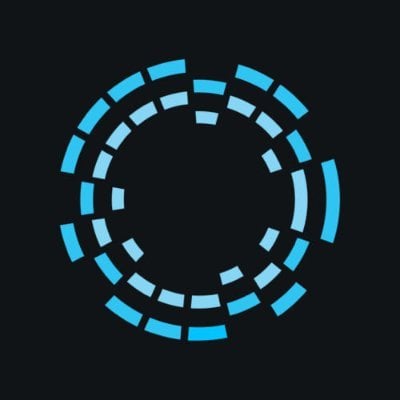Blockstream: The Bitcoin "Old Timer" Behind Bitcoin Core
Original Author: Web3CN
In December of last year, the Bitcoin Office of El Salvador (ONBTC) issued a statement saying that the Bitcoin bond "Volcano Bond" has been approved by the El Salvador Digital Assets Commission and is expected to be issued in the first quarter of 2024. This bond will be issued on the Bitfinex securities platform.
"The funds raised from the bond issuance will be used to build a city called Bitcoin City, and this bond issuance will make El Salvador a new global financial center," said Samson Mow, then Chief Strategy Officer of Blockstream, at the gathering for El Salvador's Bitcoin bonds in November 2021.
So, what role does Blockstream, the entity behind El Salvador's Bitcoin bonds, play in the world of Bitcoin?
Blockstream's Involvement in the "Full Bitcoin Industry Chain"
In August 2021, Bitcoin and blockchain infrastructure company Blockstream completed a $210 million Series B funding round and simultaneously acquired the Israeli ASIC chip design team Spondoolies, marking Blockstream's gradual expansion from a software-centric business to a more upstream position in the Bitcoin industry chain.
Prior to this, Blockstream's commercial product line mainly focused on the Bitcoin sidechain "Liquid" ecosystem, Bitcoin mining-related services, and some data-related businesses, aiming to expand and strengthen the Bitcoin ecosystem.
The Product Matrix of the "Bitcoin Full Package"
Blockstream's early product line primarily served institutional clients with Liquid sidechain solutions, and later ventured into consumer products through the acquisition of the Bitcoin wallet Green Wallet.
At the same time, Blockstream also maintains and iterates several free products in the Bitcoin ecosystem, such as the Bitcoin full node satellite network Blockstream Satellite, the multi-signature wallet Blockstream Green, and the Lightning Network client c-lightning, among others.

Although Blockstream's involvement in the development of Bitcoin Core is at the forefront of software development, the upstream of the entire Bitcoin industry chain also includes the consensus-driven mining industry. Therefore, they announced the launch of Bitcoin mining services in early 2020, collaborating with publicly listed companies in Norway such as Aker, Square, and BlockFi to develop Bitcoin mining operations.
The subsequent launch of the "Blockstream Energy" service aims to help energy producers sell excess electricity to miners, thereby providing scalable energy demand for power generation projects through Bitcoin mining, improving power generation efficiency, and enhancing the economics of renewable energy projects globally, especially in remote areas.
From the perspective of chip manufacturing, Blockstream announced the acquisition of the intellectual property of Bitcoin mining hardware manufacturer Spondoolies at the same time as the public Series B funding, with Spondoolies' core team joining Blockstream to focus on ASIC chip design and manufacturing, filling a gap for Blockstream in this area.
Additionally, Blockstream launched the Blockstream Mining Note (BMN), a Bitcoin mining token circulating on Liquid for qualified investors, with mining facilities located in Georgia, USA, and Quebec, Canada.
With the mining sector's layout being perfected, Blockstream currently covers almost all dimensions of the product matrix related to Bitcoin development, institutional services, and mining.
Bitcoin Sidechain "Liquid"
The key core of Blockstream's "Bitcoin Full Package" is "Liquid."
"Liquid" refers to the Bitcoin sidechain mentioned earlier, on which El Salvador plans to issue Bitcoin bonds. It can be simply understood as "a smart contract layer based on Bitcoin":
As a second-layer network for Bitcoin, it allows the issuance of security tokens and other digital assets, aiming to provide financial products and services through the Bitcoin network and to be used for financial asset settlement.

Currently, the Bitcoin network ecosystem can be simply divided into four basic structural layers:
- 1. Main chain, which mainly handles the value system of Bitcoin, carrying the decentralization and security of Bitcoin as well as the value orientation represented by the Bitcoin community;
- 2. Second layer, represented by the Lightning Network, focusing on enhancing the payment experience of Bitcoin;
- 3. Sidechain, where the smart contract components are primarily placed, with the most important function of the sidechain being the addition of smart contract applications to the Bitcoin ecosystem;
- 4. Cross-chain, where almost all mainstream public chains have introduced Bitcoin into their ecosystems through cross-chain bridges, and within their ecosystems (especially Ethereum), they are used to develop Bitcoin-related DeFi projects;
The "Liquid" sidechain is also the core of Blockstream's products. Although other products are interconnected, the Liquid network is prioritized as the most important product line. "For example, the wallets we develop will ultimately connect to the Liquid network, so the wallet's own profit model is secondary; the main focus is on how to grow the Liquid network."
Blockstream: The "Old Gun" of the Bitcoin World
In 2014, as Ethereum began its presale, Mt. Gox was hacked, and the Bitcoin community's scaling debate intensified, the entire crypto world focused on these few events that had a profound impact on the industry.
At the same time, Blockstream, which had been established for less than a few months, secured $20 million in Series A funding and clarified its project positioning at that time—expanding the functionality of the Bitcoin protocol layer (sidechains).
The company boasted a formidable lineup, led by former HashCash developer Adam Back; early developer of e-cash and founder of Zero-Knowledge Systems Hammie Hill, both of whom were foundational products of Bitcoin.
Additionally, Blockstream had an all-star development team, including Gregory Maxwell, Jonathan Wilkins, Matt Corallo, and Pieter Wuille, who later became leaders in Bitcoin core development; Jorge Timon, the project lead for Freicoin; and former NASA engineer Mark Friedenbach, among others.
The "Opposition" in the Bitcoin Scaling Debate
In the Bitcoin scaling debate, the community leaders at that time, such as Gavin Andresen and Bitmain, were proponents of scaling, while Blockstream, represented by core developer Gregory Maxwell, was in opposition.
Proponents of scaling argued that the network congestion issue must be resolved immediately; otherwise, as the user base expands, payment delays would become very apparent, and transaction fees would skyrocket to alarming levels, which is unacceptable for Bitcoin, which aims to be "electronic cash." Gavin Andresen bluntly stated, "Rising Bitcoin transaction fees will drive the poor away from Bitcoin."
The opposition, however, believed that the congestion issue could and should be resolved in the long term through second-layer networks, as scaling could only address short-term congestion. As more people flocked to Bitcoin, the already scaled Bitcoin would have to continue scaling, and such an approach seemed endless. Therefore, they advocated for maintaining the Bitcoin network at 1MB while launching second-layer solutions like Segregated Witness and the Lightning Network outside the Bitcoin network.
The points of contention between the developers and the miners' representatives stemmed from mutual distrust:
Developers did not trust the miners' representatives, believing that mining pools and the large companies operating them had usurped the miners' voice, turning industrialized mining into a centralized commercial activity, and the existence of "mining barons" was undermining the decentralized essence of digital currency;
Miners' representatives, on the other hand, believed that once the Lightning Network was truly established, the vast majority of transactions would occur on the second-layer network, which would ultimately lead to absolute centralization, monopolizing transaction channels by central nodes. The underlying network would become a settlement channel for the second-layer network's central nodes, and most people would never use the underlying network in their lifetime, contradicting Satoshi Nakamoto's original intention in creating Bitcoin.
In the subsequent New York meeting aimed at negotiation, due to various disagreements, Samson Mow, representing Bitcoin Core and Blockstream, was denied entry.
The subsequent disputes and conflicts over various routes need not be elaborated further; the outcome is well known. With the Pandora's box of Bitcoin fork coins like BCH opened, everything became irretrievable.
The Controversy of "Bitcoin Development" vs. "Corporate Organization"
Blockstream has publicly disclosed its funding information three times: $21 million in seed funding in November 2014, $55 million in Series A funding in February 2016, and a strategic investment from Digital Garage (DG Lab Fund) in November 2017, with the specific amount undisclosed.
It is also important to clarify that Bitcoin Core is an open-source project responsible for maintaining and releasing the Bitcoin client software "Bitcoin Core" (including full node validation and Bitcoin wallets) and some related software maintenance.
Among the core developers and contributors involved in the Bitcoin Core project, a significant portion are employees of Blockstream, funded by Blockstream for their development work. This has led to a dual paradoxical controversy regarding Blockstream's "Bitcoin development" and "corporate organization":
On one hand, Blockstream has gradually gathered a group of the best developers in the Bitcoin community, contributing to the daily code development and maintenance of Bitcoin;
On the other hand, the way these developers participate in the open-source project differs from the original Bitcoin core developers—they are directly employed by Blockstream and are salaried company employees;
Moreover, Blockstream's financing and business development are centered around Bitcoin products like the second-layer network, which has begun to raise concerns among some community members about the independence of Bitcoin core developers. The community's worries have thus surfaced:
Core members represented by Blockstream have lost their independence and impartiality in development, posing a risk of turning the entire Bitcoin base layer into a subordinate of the second-layer network. Some have even stated, "Blockstream controls the Bitcoin code."
Daily Sparring with the Ethereum Community
"Based on Ethereum, it is impossible to build a truly decentralized financial system; it can only be achieved through Bitcoin, the Lightning Network, and Liquid." Blockstream can be seen as the most influential "KOL organization" in the Bitcoin community. Whether it's CEO Adam Back or COO Samson Mow, they often take pleasure in criticizing the Ethereum community.
Adam Back once stated in response to others that Ethereum is similar to a Ponzi scheme, while Buterin believes that Ethereum is on the rise, and the tide of history will not favor (Bitcoin) maximalists.
In the subsequent heated debate between Samson Mow and Vitalik, they even initiated a "mutual harm" questioning regarding Ethereum and Liquid, stating, "No one will build any secure (e.g., financial) system on the Ethereum platform. If you want a token, you can issue it on the Liquid network, and later you can thank me."
To some extent, Blockstream represents the entire Bitcoin landscape—the Bitcoin scaling debate, the Lightning Network and sidechain solutions, and the route disputes with competing coins like Ethereum, all intertwined and complex.











